SIU Director’s Report - Case # 24-PFP-248
Warning:
This page contains graphic content that can shock, offend and upset.
Contents:
Mandate of the SIU
The Special Investigations Unit is a civilian law enforcement agency that investigates incidents involving an official where there has been death, serious injury, the discharge of a firearm at a person or an allegation of sexual assault. Under the Special Investigations Unit Act, 2019 (SIU Act), officials are defined as police officers, special constables of the Niagara Parks Commission and peace officers under the Legislative Assembly Act. The SIU’s jurisdiction covers more than 50 municipal, regional and provincial police services across Ontario.
Under the SIU Act, the Director of the SIU must determine based on the evidence gathered in an investigation whether there are reasonable grounds to believe that a criminal offence was committed. If such grounds exist, the Director has the authority to lay a criminal charge against the official. Alternatively, in cases where no reasonable grounds exist, the Director cannot lay charges. Where no charges are laid, a report of the investigation is prepared and released publicly, except in the case of reports dealing with allegations of sexual assault, in which case the SIU Director may consult with the affected person and exercise a discretion to not publicly release the report having regard to the affected person’s privacy interests.
Information Restrictions
Special Investigations Unit Act, 2019
Pursuant to section 34, certain information may not be included in this report. This information may include, but is not limited to, the following:
- The name of, and any information identifying, a subject official, witness official, civilian witness or affected person.
- Information that may result in the identity of a person who reported that they were sexually assaulted being revealed in connection with the sexual assault.
- Information that, in the opinion of the SIU Director, could lead to a risk of serious harm to a person.
- Information that discloses investigative techniques or procedures.
- Information, the release of which is prohibited or restricted by law.
- Information in which a person’s privacy interest in not having the information published clearly outweighs the public interest in having the information published.
Freedom of Information and Protection of Personal Privacy Act
Pursuant to section 14 (i.e., law enforcement), certain information may not be included in this report. This information may include, but is not limited to, the following:
- Confidential investigative techniques and procedures used by law enforcement agencies; and
- Information that could reasonably be expected to interfere with a law enforcement matter or an investigation undertaken with a view to a law enforcement proceeding.
Pursuant to section 21 (i.e., personal privacy), protected personal information is not included in this report. This information may include, but is not limited to, the following:
- The names of persons, including civilian witnesses, and subject and witness officials;
- Location information;
- Witness statements and evidence gathered in the course of the investigation provided to the SIU in confidence; and
- Other identifiers which are likely to reveal personal information about individuals involved in the investigation.
Personal Health Information Protection Act, 2004
Pursuant to this legislation, any information related to the personal health of identifiable individuals is not included.
Other proceedings, processes, and investigations
Information may also have been excluded from this report because its release could undermine the integrity of other proceedings involving the same incident, such as criminal proceedings, coroner’s inquests, other public proceedings and/or other law enforcement investigations.
Mandate Engaged
Pursuant to section 15 of the SIU Act, the SIU may investigate the conduct of officials, be they police officers, special constables of the Niagara Parks Commission or peace officers under the Legislative Assembly Act, that may have resulted in death, serious injury, sexual assault or the discharge of a firearm at a person.
A person sustains a “serious injury” for purposes of the SIU’s jurisdiction if they: sustain an injury as a result of which they are admitted to hospital; suffer a fracture to the skull, or to a limb, rib or vertebra; suffer burns to a significant proportion of their body; lose any portion of their body; or, as a result of an injury, experience a loss of vision or hearing.
In addition, a “serious injury” means any other injury sustained by a person that is likely to interfere with the person’s health or comfort and is not transient or trifling in nature.
This report relates to the SIU’s investigation into the discharge of a firearm by the police at a 44-year-old man (the Complainant).
The Investigation
Notification of the SIU[1]
On June 12, 2024, at 2:37 p.m., the Ontario Provincial Police (OPP) contacted the SIU with the following information.
The OPP had been conducting a homicide investigation that started in May of 2024. On this date, June 12, 2024, the suspect - the Complainant - was seen in the vicinity of the Kettle Lakes Provincial Park. The OPP deployed their Tactics and Rescue Unit (TRU) and Emergency Response Team. The suspect was seen getting into a canoe and heading towards an island. OPP officers began to follow the Complainant. He discharged a firearm at them, striking a TRU member in the neck. The OPP returned gunfire to give officers on the water an opportunity to exit the area. The Complainant was not struck. He eventually surrendered and was arrested without incident.
The Team
Date and time team dispatched: 2024/06/12 at 5:10 p.m.
Date and time SIU arrived on scene: 2024/06/12 at 11:15 p.m.
Number of SIU Investigators assigned: 4
Number of SIU Forensic Investigators assigned: 2
Affected Person (aka “Complainant”):
44-year-old male; interviewed
The Complainant was interviewed on June 13, 2024.
Civilian Witnesses (CW)
CW #1 Interviewed
CW #2 Interviewed
CW #3 Interviewed
The civilian witnesses were interviewed between June 18 and 21, 2024.
Subject Officials (SO)
SO #1 Declined interview and to provide notes, as is the subject official’s legal right
SO #2 Declined interview and to provide notes, as is the subject official’s legal right
SO #3 Declined interview and to provide notes, as is the subject official’s legal right
SO #4 Declined interview and to provide notes, as is the subject official’s legal right
SO #5 Declined interview and to provide notes, as is the subject official’s legal right
Witness Officials (WO)
WO #1 Interviewed; notes received and reviewed
WO #2 Interviewed; notes received and reviewed
WO #3 Interviewed; notes received and reviewed
WO #4 Interviewed; notes received and reviewed
WO #5 Not interviewed; notes reviewed and interview deemed unnecessary
The witness officials were interviewed between June 13, 2024, and September 5, 2024.
Evidence
The Scene
The events in question transpired on and around Night Hawk Lake, Timmins, Ontario.
On June 13, 2024, the SIU forensic investigators arrived at a small island west of Moose Island, Night Hawk Lake.

Two motor-powered boats were tied-off near the north shore. One of them was an OPP boat (Boat #2), and the second appeared to be a non-police boat (Boat #1).
Boat #1 was made of aluminum and white in colour. A Mercury motor rested on the stern. It had no windshield. There was debris in the boat. Wooden ores and a red fuel container were in the boat.
Boat #2 was made of aluminum and white in colour. An identifier number was printed on the bow, and it had an OPP decal on the stern. A Johnson motor rested on the stern.
The island was heavily forested. The shoreline was covered with large, irregular-shaped rocks positioned in a steep incline. Beyond the shoreline, the area was densely wooded with trees, shrubs and other foliage. Trip hazards were obvious. The ground was wet, slippery, and covered with fallen trees, leaves, and moss. Visibility was limited due to the number of trees and branches.
The length of the island was approximately 25-30 metres, and the width of the island was approximately 20 metres. It was uninhabited. A rock formation and a large, wooded area could be seen approximately 350-400 metres southeast of the island.
An area of interest was located near the middle of the island. Four small-calibre fired cartridge cases were located on the ground.
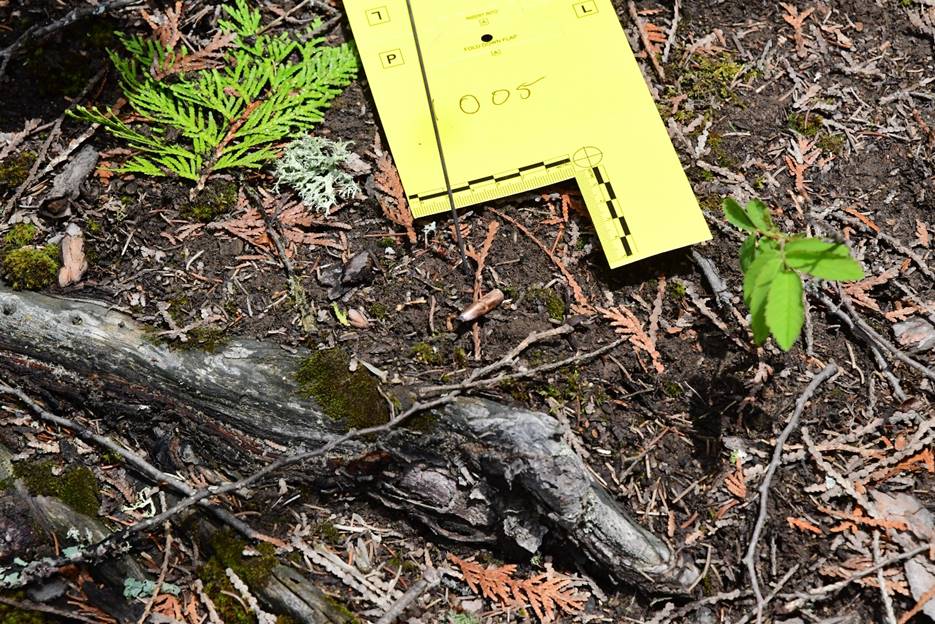
Figure 1 – Small-calibre cartridge case located on the ground
There were numerous impact strikes in trees, most of which were on the east and south sides of the tree trunks. Eleven impact strikes were located.
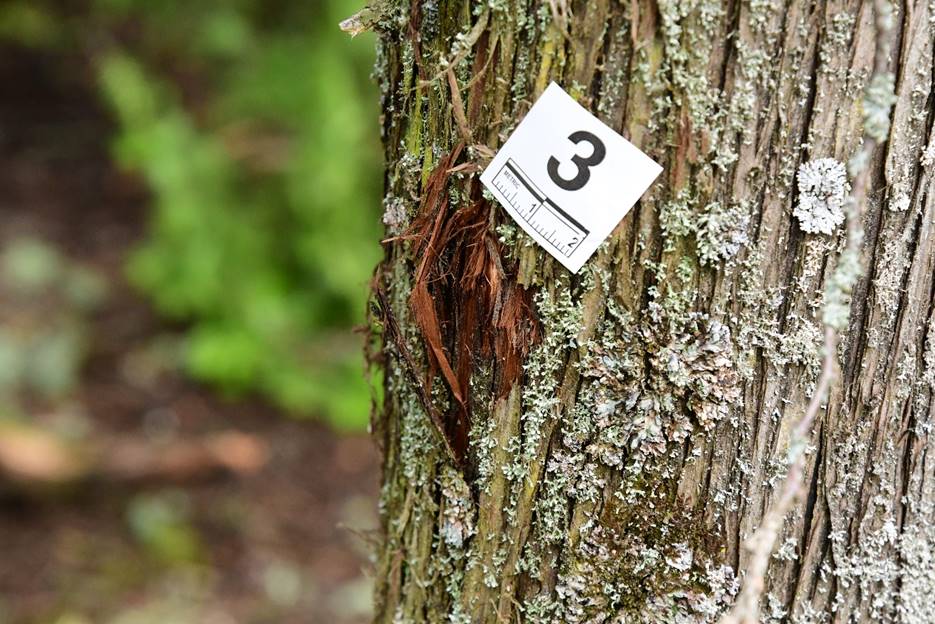
Figure 2 – Impact strike to tree
Attempts made to extract the projectiles were to no avail. One projectile was located on the south side shore.
Physical Evidence
The following items were examined by a SIU forensic investigator:
- A canoe with sections of white, brown and green colouring on the exterior.
- A 5.56 mm rifle with a scope, flashlight, laser, and magnifier attached [SO #5]. The inserted magazine was removed. The magazine had a 30-cartridge capacity. Twenty-nine unfired cartridges were removed from the magazine.
- An Armalite AR10A-4, 7.62 mm with attached scope [SO #4]. The inserted magazine was removed. There was no preview window or markings on the magazine indicating the maximum cartridge capacity; however, the cartridge capacity was believed to be twenty. Eighteen unfired cartridges were removed from the magazine.
- A 5.56 mm rifle with a scope, flashlight, and laser attached [SO #2]. The inserted magazine was removed. The magazine had a 30-cartridge capacity. Twenty-nine unfired cartridges were removed from the magazine.
- A 5.56 mm rifle with scope, flashlight, magnifier, and laser attached [WO #4]. The inserted magazine was removed. The magazine had a 30-cartridge capacity. Twenty-eight unfired cartridges were removed from the magazine.
- A 5.56 mm with scope, flashlight, laser, and suppressor attached [SO #1]. The inserted magazine was removed. The magazine had a 30-cartridge capacity. Twenty-nine unfired cartridges were removed from the magazine.
- A 5.56 mm rifle with scope, flashlight, magnifier, and laser attached [SO #3]. The inserted magazine was removed. The magazine had a 30-cartridge capacity. Twenty-four unfired cartridges were removed from the magazine.
- An Enfield 37 mm, Anti-Riot Weapon Enfield (ARWEN) with scope, flashlight, and laser attached, and one shot capacity. An unfired ARWEN baton cartridge was taped to the stock.
- A 5.56 mm rifle magazine with a 30-cartridge capacity. Twenty-seven unfired cartridges were removed from the magazine.
- A 5.56 mm rifle magazine with a 30-cartridge capacity. No cartridges were visible in the magazine. The magazine was empty.
- A 5.56 mm rifle magazine with a 30-cartridge capacity. Nineteen unfired cartridges were removed from the magazine.
- A 5.56 mm rifle magazine with a 30-cartridge capacity. Fourteen unfired cartridges were removed from the magazine.
- A 5.56 mm rifle magazine with a 30-cartridge capacity. Twelve unfired cartridges were removed from the magazine.
- Seven fired cartridge cases in a sealed evidence bag.
- Six fired cartridge cases in a sealed evidence bag.
- Two fired cartridge cases in a sealed evidence bag.
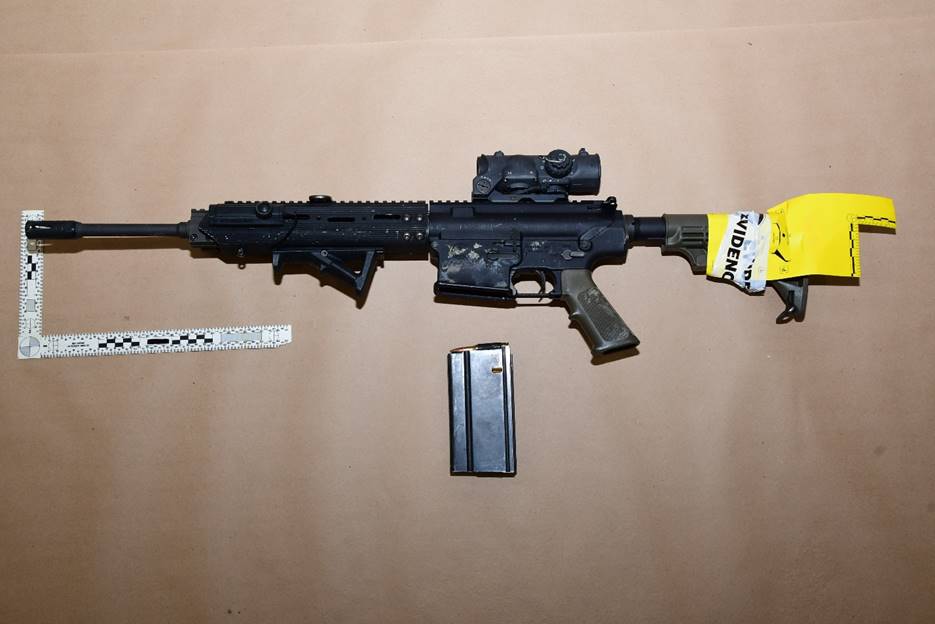
Figure 3 - Armalite AR10A-4 used by a subject official
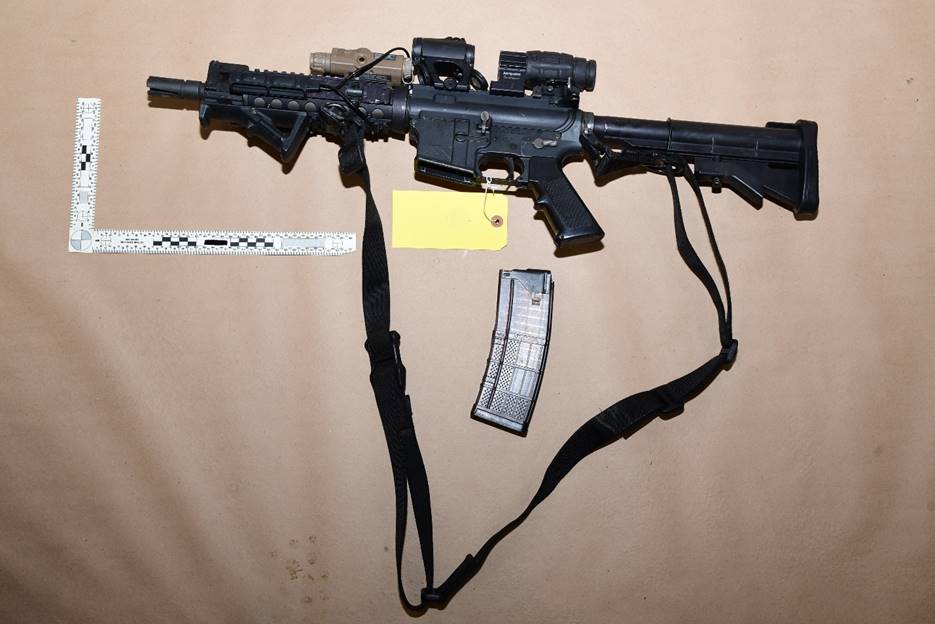
Figure 4 - 5.56 mm rifle used by a subject official
The Complainant’s rifle was recovered by OPP divers. The rifle case contained a rifle with a loaded magazine. The inserted magazine was removed. There were no markings or preview window that indicated the magazine’s cartridge capacity. A cartridge was visible on the top of the magazine’s feed ramp. REM was marked on a cartridge head stamp. One live cartridge was removed from the extraction port. SUPER was marked on the cartridge head stamp. The rifle was examined and had the following identifiers on it: C.F. Mossberg and Sons Inc. North Haven, Conn. USA.
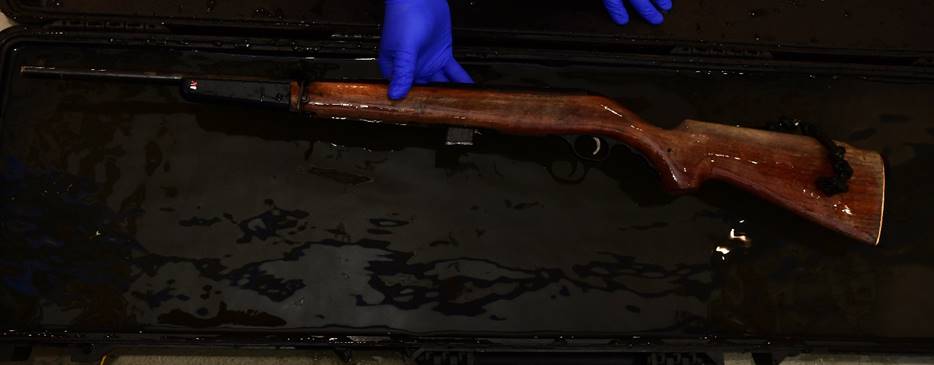
Figure 5 - Rifle used by Complainant
Video/Audio/Photographic Evidence[2]
OPP Communications Recordings - June 12, 2024
Starting at about 11:47:36 a.m., CW #3 called police indicating there was a lone male in a canoe who had just pulled up beside a sauna and was now out on foot. He believed the male looked a lot like a wanted suspect - the Complainant.
Starting at about 11:48:19 a.m., CW #3 indicated he could see a helicopter in the area and heard gunshots.
Starting at about 12:01:32 p.m., a canoe was on the shoreline.
Starting at about 12:03:41 p.m., a civilian called indicating he could see a canoe heading north on the lake with one person. Conditions were very rough, and the civilian indicated he should not be out there.
Starting at about 12:13:21 p.m., the civilian reported the canoe was now heading north towards Highway 101.
Starting at about 12:14:14 p.m., it was noted that the TRU were in a boat passing Moose Island and heading north to cut off the suspect.
Starting at about 12:20:56 p.m., TRU had a visual of the male on the canoe between White Fish Bay and Moose Island. They were keeping their distance.
Starting at about 12:24:30 p.m., it was reported that the suspect had capsized the canoe, and that TRU would attempt a rescue.
Starting at about 12:29:24 p.m., it was noted that the canoe had beached near an island, and the male suspect might be on the island in a defensive position.
Starting at about 12:29:51 p.m., it was reported that TRU were keeping their distance, and would establish containment until the helicopter returned.
Starting at about 12:43:24 p.m., it was reported the helicopter would be over the target in four minutes.
Starting at about 12:46:45 p.m., it was noted that the island was contained, and the helicopter was maintaining watch from overhead.
Starting at about 12:56:28 p.m., it was reported that shots were fired.
Starting at about 12:57:05 p.m., it was reported that contact was made.
Starting at about 1:00:07 p.m., efforts were being made to extract an officer by air.
Starting at about 1:00:41 p.m., a request for an ambulance was made. Two gunshot wounds to the neck were reported and it was noted that the helicopter would be transporting the injured party directly to hospital.
Starting at about 1:18:55 p.m., it was noted that the suspect was going back out on the lake.
Starting at about 1:29:23 p.m., it was reported that the TRU had the suspect in custody.
In-car Camera (ICC) Footage - Officer #1
On June 12, 2024, at 1:54:48 p.m., a rear door of the police vehicle was opened.
Starting at about 1:56:45 p.m., the Complainant was placed in the rear of the police vehicle handcuffed with his hands behind his back.
Starting at about 1:59:03 p.m., Officer #1 entered the police vehicle and re-read the charges and cautions to the Complainant: ‘breach of recognizance’, ‘break and enter’, and ‘attempted murder’.
Starting at about 2:00:37 p.m., the Complainant said, “I hope your buddy’s okay, by the way, I didn’t mean to hit him.”
Materials Obtained from Police Service
Upon request, the SIU received the following materials from the OPP between June 20, 2024, and September 18, 2024:
- ICC footage;
- Communications recordings;
- Event Details Reports;
- Photographs;
- List of involved officers;
- Notes – WO #2;
- Notes – WO #5;
- Notes – WO #3;
- Notes – WO #1;
- Notes – WO #4
- Arrest Report – the Complainant; and
- Identification Report.
Incident Narrative
The evidence collected by the SIU, including interviews with the Complainant, and police and non-police witnesses, gives rise to the following scenario. As was their legal right, none of the subject officials agreed an interview with the SIU or the release of their notes.
In the morning of June 12, 2024, TRU officers were deployed to the area of Night Hawk Lake to search for a suspect in a murder investigation – the Complainant. Under the command of WO #3, and with the aid of a helicopter and motorized water vessels, the officers checked various sites in the area with negative results.
The Complainant was operating a canoe on the lake and was armed with a .22-caliber rifle. At one point, he came ashore near a camp on the southwest side of the lake. CW #3, suspicious of a male on a canoe in bad lake conditions, contacted police.
In the helicopter, WO #3, SO #3 and WO #4, made their way to the camp. As they approached, the Complainant fired on the helicopter. The time was about 11:48 a.m.
SO #3 and WO #4 were dropped off and spoke to the camp owner, who took them out in his boat to meet with the OPP-operated boats on the lake. The Complainant had left the area and was making his way in his canoe to a small island west of Moose Island.
The plan at this time was to have the OPP-operated boats – piloted by WO #1 and WO #2 – sail around the island from a distance. The Complainant was to be contained on the island pending the arrival of additional police resources. The engine of WO #2’s boat stopped working and the vessel started to drift towards the island. WO #1 arrived to assist. As he and WO #2 were working on the dead engine, a shot was fired. WO #4, operating a drone from WO #2’s boat, had been struck in the neck by a bullet. The time was about 12:56 p.m.
The Complainant had started to fire at the boat from the island. It is unknown how many shots in total he discharged, but spent cartridge cases later located on the island suggests he fired at least five times. TRU officers inside the two boats returned fire towards the island. The shooting continued for a period as WO #1 towed WO #2’s boat away from the island a safe distance. WO #4 was lifted out of the boat onto a crop of rocks, from which he was airlifted out of the area by the helicopter.
The TRU officers maintained their position near that location, some 300 metres east of the island on which the Complainant was located. Some time passed and an officer exclaimed something to the effect of, “Gun. He has something in his hands.” SO #3 fired twice. The Complainant was in his canoe paddling towards the officers. As he neared, he held the paddle above his head as if he was surrendering.
The officers approached the Complainant on the water, boarded his canoe, and took him into custody.
Relevant Legislation
Section 34, Criminal Code - Defence of Person – Use or Threat of Force
34 (1) A person is not guilty of an offence if
(a) they believe on reasonable grounds that force is being used against them or another person or that a threat of force is being made against them or another person;
(b) the act that constitutes the offence is committed for the purpose of defending or protecting themselves or the other person from that use or threat of force; and
(c) the act committed is reasonable in the circumstances.
(2) In determining whether the act committed is reasonable in the circumstances, the court shall consider the relevant circumstances of the person, the other parties and the act, including, but not limited to, the following factors:
(a) the nature of the force or threat;
(b) the extent to which the use of force was imminent and whether there were other means available to respond to the potential use of force;
(c) the person’s role in the incident;
(d) whether any party to the incident used or threatened to use a weapon;
(e) the size, age, gender and physical capabilities of the parties to the incident;
(f) the nature, duration and history of any relationship between the parties to the incident, including any prior use or threat of force and the nature of that force or threat;
(f.1) any history of interaction or communication between the parties to the incident;
(g) the nature and proportionality of the person’s response to the use or threat of force; and
(h) whether the act committed was in response to a use or threat of force that the person knew was lawful.
(3) Subsection (1) does not apply if the force is used or threatened by another person for the purpose of doing something that they are required or authorized by law to do in the administration or enforcement of the law, unless the person who commits the act that constitutes the offence believes on reasonable grounds that the other person is acting unlawfully.
Analysis and Director’s Decision
On June 12, 2024, the OPP contacted the SIU to reported that there had been an exchange of gunfire between TRU officers and the Complainant on Night Hawk Lake earlier that day. An OPP officer had been struck in the neck by a bullet. The Complainant had been arrested without injury. The SIU initiated an investigation naming five officers subject officials – SO #1, SO #2, SO #3, SO #4 and SO #5. The investigation is now concluded. On my assessment of the evidence, there are no reasonable grounds to believe that any of the subject officials committed a criminal offence in connection with the incident.
Section 34 of the Criminal Code provides that conduct that would otherwise constitute an offence is legally justified if it was intended to deter a reasonably apprehended assault, actual or threatened, and was itself reasonable. The reasonableness of the conduct is to be assessed in light of all the relevant circumstances, including with respect to such considerations as the nature of the force or threat; the extent to which the use of force was imminent and whether there were other means available to respond to the potential use of force; whether any party to the incident used or threatened to use a weapon; and, the nature and proportionality of the person’s response to the use or threat of force.
The OPP officers were engaged in a lawful police operation attempting to locate and arrest a man – the Complainant – they had reason to believe was involved in a recent murder.
Though none of the officers who fired their weapons submitted to interviews with the SIU, as was their legal right, the evidence suggests they did so to defend themselves and their colleagues from a reasonably apprehended attack by the Complainant. The TRU officers – SO #1, SO #2, SO #3, SO #4 and SO #5 - only started to fire after the Complainant took aim at the officers on the lake and shot in their direction. Even following the initial exchange of gunfire, when it seems TRU officers continued to fire after the Complainant had stopped, it would appear their force was defensive in nature. The Complainant was concealed on a heavily-wooded island and, as far as the officers would have been understandably concerned, still a real and present danger.
I am also satisfied that the force used by the subject officials, namely, gunfire, constituted reasonable force. The initial volley of police gunfire was a direct response to shots fired in their direction by the Complainant. Clearly, faced with a lethal threat, a resort to lethal force of their own was a rational and proportionate response. The same may be said of the subsequent police gunfire. The officers could not be sure if the Complainant had run out of ammunition or been incapacitated at the same time as they were in a very vulnerable position on the lake, particularly as they attempted to create distance from the island to safely evacuate WO #4. On this record, it made sense to fire at the island to mitigate the risk of the Complainant resuming his attack, what some described as ‘suppression gunfire’. The tactic, it should be noted, was a calculated one as the island was uninhabited (except for the Complainant’s presence), reducing the possibility of third-party casualties. There is some evidence that the Complainant was shot at as he paddled towards the officers to surrender. Here too, however, the evidence falls short of reasonably establishing excessive force by the officers as the gunfire appears to have occurred when the Complainant was still thought to be armed. No further shots were fired as he neared the officers and it became clear that he was not in possession of a firearm.
For the foregoing reasons, there is no basis for proceeding with criminal charges in this case. The file is closed.
Date: November 4, 2024
Electronically approved by
Joseph Martino
Director
Special Investigations Unit
Endnotes
- 1) Unless otherwise specified, the information in this section reflects the information received by the SIU at the time of notification and does not necessarily reflect the SIU’s findings of fact following its investigation. [Back to text]
- 2) The following records contain sensitive personal information and are not being released pursuant to section 34(2) of the Special Investigations Unit Act, 2019. The material portions of the records are summarized below. [Back to text]
Note:
The signed English original report is authoritative, and any discrepancy between that report and the French and English online versions should be resolved in favour of the original English report.
